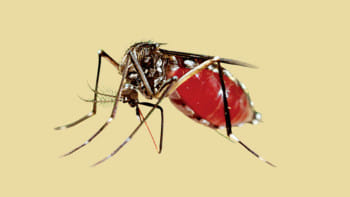Once upon a time in Dacca

Photo: Star File
Marriages are made in heaven but customs are made in society. In pre-partition and early fifties of Dhaka pairs were united and marriages took place; and there were customs reflecting the ethos of the Muslim society of Dhaka. As time passed on, as modern advancement took over, the customs changed, a time and its custom became history. It still makes an interesting story!
In those times, arranged marriage was the practice. The Mutashas or the female matchmakers tied the nuptial knots. A burqa clad woman the Mutashas went from family to family conveying the paigham (offer). When the choices meet the married ladies of the boy's family is invited to the girl's house. They take a closer look at the girl as to her looks and physical soundness. The visit is preceded by a procession of sweetmeat carriers; the sweetmeat carried on trays covered with red satin shroud with golden frills generally weighed two and a half maund to four maund. Paan or betel leaves were also there. It created an awakening in the area that a paigham is being sent.
The girl came with a bowed head with the head cover or aanchal lowered to hide the gaze. The matronly ladies first looked at her eyes to assure them that she is not squint eyed. Her locks were unfastened to reach to its full length. Then they took a look at her ankle. It has to be slender for a stub shaped ankle means that she will become a widow. The back is then checked to determine that she does not have a hump of a camel. When the inspection is satisfactory the paigham proceeds. The Mutasha or the match maker is given a pair of sandal, an umbrella and a saree.
Panchini or engagement ceremony is an event where the patricians of the two families confer to agree on den mohr or alimony, kabin Muslim marriage bond, ornaments, dress and on the date of the wedding. The visitors are welcomed with a quarter glass of sherbet followed by sumptuous dinner; kupta pulao, korma (chicken curry), rejala (mutton curry), shirberen or a special kind of dessert.
Panchini is followed by Bala Bali or "Gaye Holud" marked by many customs with effusion of merriment particularly in the bride's family. The bride is placed on a chowki wooden platform with a paati rattan mattress with four plantain trees in the four corners and a red sheet overhead. Then uptan turmeric paste is applied to the forehead and cheek of the bride and rubbed all over her body.Then mehedi or henna design is made on her palm and hand.
Five items - five leaves of paan, five strands of grass, five paddy grains, five betel nuts and five green plantains with an earthen lamp are placed on a kulathreshing pan. In succession the ladies holding it move the kula around the face of the bride in a circle five times and then apply turmeric paste to the forehead of the bride and on their own foreheads.
An earthen pot of shirbirin(sweet dish)with a rolled betel leaf tucked into it is placed near the platform. Seven girls or Balis and a boy or Bala from bride's brothers and sister's families play around and partake of shirbirin.
On the day of marriage the boy's family sends sets of dresses for the children of the family of the bride. This is called Bachkanya.The boy's family also sendssets of dresses for the seven friends of the bride. This is called Saatsuhagan conciliation of seven friends of the bride.
From the day of Bala Bali the bride does not take fish till the fish from the boy's side arrives. All this time the bride keeps her gaze shyly lowered. The bride will raise her gaze to see her husband under a red urnia shroud overhead in a mirror held between the two! Her prince charming!
Through these customs, efforts were made to endow the wedding with all the elements of a fairy tale. Marriage is a dream. In the colours of the customs the couples of Dhaka lived that dream!


 For all latest news, follow The Daily Star's Google News channel.
For all latest news, follow The Daily Star's Google News channel. 



Comments